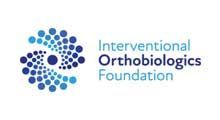November 21, 2025
Understanding your pain management options is crucial for making informed decisions about your health. Non-surgical pain management encompasses a range of treatments that can effectively alleviate pain without the need for invasive procedures. This article explores the various aspects of non-surgical pain management and highlights effective alternatives to surgery to help you determine if it is the right choice for you.
Understanding Non-Surgical Pain Management
Non-surgical pain management involves a variety of strategies aimed at relieving pain without surgery. These treatments can be used for conditions such as arthritis, back pain, and neuropathy. Techniques include medication, physical therapy, and alternative therapies. By avoiding surgical intervention, patients can often achieve pain relief with minimal risk. Understanding this scope is essential for determining its appropriateness for your condition and exploring non-surgical treatment options that may offer similar relief.
Non-surgical treatments encompass a broad range of modalities designed to manage pain. Physical therapy involves exercises to improve mobility and strength, which can help alleviate discomfort. Medications, such as anti-inflammatories and nerve blockers, are also common. Furthermore, alternative methods like acupuncture and chiropractic care offer additional avenues for pain relief. Each of these options can be tailored to the individual needs of the patient, making them valuable alternatives for many conditions.
The benefits of non-surgical pain management are significant. These approaches are often less invasive, thereby reducing the risk of complications. Recovery times are generally quicker, allowing for a faster return to daily activities. Patients also tend to experience fewer side effects compared to surgical interventions. Given these advantages, alternatives to surgery have become increasingly popular among individuals seeking safer, more manageable treatment options.
Non-surgical pain management is suitable for a wide range of patients. Individuals with chronic pain conditions, such as fibromyalgia or osteoarthritis, often find relief with these methods. Moreover, those who are not candidates for surgery, perhaps due to age or other health conditions, can benefit. According to Forbes, about 20% of adults experience chronic pain, highlighting the need for diverse management options. Therefore, many can find viable alternatives to surgery through non-surgical approaches that fit their lifestyle and health goals.
Evaluating Your Pain
Assessing pain accurately is fundamental to effective management. Methods for evaluation include patient self-reporting, where individuals describe their pain on scales or through questionnaires. Healthcare providers also perform physical examinations to detect pain triggers. High-tech options, like thermography, can be employed to assess pain levels. This comprehensive approach ensures a thorough understanding of each patient’s specific condition, guiding them toward appropriate alternatives to surgery.
Maintaining a pain diary can be invaluable. Recording when pain occurs, its intensity, and triggers can reveal patterns. This data aids both the patient and healthcare provider in making informed decisions. Regular entries can also assist in tracking the effectiveness of treatments. Overall, documentation serves as a cornerstone for personalizing pain management plans and choosing the most effective alternatives to surgery.
Engaging with healthcare professionals is crucial for accurate pain assessment. Practitioners bring expertise in diagnosing underlying causes and recommending suitable treatments. During consultations, patients should communicate openly about their pain experiences. This collaboration fosters a clearer picture of the individual’s needs. Together, they can explore both traditional and alternative therapies for relief.
Diagnostic tests play a pivotal role in understanding pain conditions. Imaging techniques like MRI or X-rays can visually confirm a provider’s diagnosis. These tests help identify structural issues contributing to pain. Additionally, laboratory tests might be necessary to rule out other medical conditions. With this information, more precise treatment plans can be formulated.
Exploring Non-Surgical Options
Physical therapy is foundational in non-surgical pain management. It focuses on exercises designed to strengthen muscles and increase flexibility. This not only alleviates current pain but also prevents future issues. Therapists create individualized exercise plans, adapting them as the patient progresses. Such plans are integral for maintaining long-term functionality and mobility, serving as excellent alternatives to surgery for many chronic pain conditions.
Medications can be a core component of non-surgical pain management. Common options include non-steroidal anti-inflammatory drugs (NSAIDs) and acetaminophen. For some, prescription medications like muscle relaxants or nerve pain agents are necessary. It is crucial to monitor medication effects under the supervision of a healthcare provider. This helps manage potential side effects or the risk of dependence.
Addressing the psychological aspects of pain is an important component of management. Cognitive-behavioral therapy (CBT) helps patients develop coping strategies for pain. Mindfulness and relaxation techniques further aid in pain perception reduction. By changing how individuals perceive their pain, overall well-being can improve. Such approaches complement medical treatments, offering a holistic way to manage pain.
Interventional techniques include targeted treatments like nerve blocks or corticosteroid injections. These methods can provide relief by directly addressing the source of pain. Nerve blocks involve injecting medication near nerves to interrupt pain signals. Similarly, steroid injections reduce inflammation, causing pain. These techniques offer relief for severe pain that might otherwise require surgical intervention, serving as effective alternatives to surgery.
Assessing Risks and Benefits
All medical treatments, including non-surgical options, come with potential side effects. For instance, medications can cause nausea, dizziness, or allergic reactions. It is essential to monitor these effects closely and communicate them to healthcare providers. Understanding the risk profile of these treatments enables informed decision-making. Balancing risks with benefits is key to successful pain management.
Determining the efficacy of non-surgical versus surgical options is vital for patients. Non-surgical methods can be equally effective, especially when combined. For chronic conditions, they offer sustained relief without surgical risks. While surgery might provide immediate relief, non-surgical interventions often yield comparable long-term results. Evaluating these factors helps patients make choices aligned with their goals and encourages them to consider safe alternatives to surgery.
Setting realistic goals is crucial for any treatment plan. Non-surgical options might not provide instant relief, but gradual progress is often seen. Patients should be prepared for incremental improvements and adjust expectations accordingly. Managing these expectations fosters a more positive treatment experience. Understanding the timelines for different treatments enhances patient satisfaction.
Non-surgical treatments often focus on long-term benefits rather than immediate relief. While initial progress might be slow, consistent improvements contribute to a better quality of life. Long-term management is crucial for chronic pain conditions affecting daily life. Integrating various non-surgical approaches can foster sustained relief over time. Patients should prioritize comprehensive, ongoing strategies in their pain management plans.
Consulting With Professionals
Selecting a qualified healthcare provider is fundamental for effective pain management. Providers should be experienced in non-surgical methods and up-to-date with the latest practices. It's important to research providers’ credentials and patient satisfaction. A good provider not only treats but also educates on various treatment options. This partnership is crucial for navigating the complexities of pain management.
Preparation for consultations can enhance their productivity. Patients should compile a comprehensive list of symptoms, medications, and past treatments. Writing down questions and concerns ensures nothing is overlooked. Bringing relevant medical records can expedite the diagnostic process. Adequate preparation facilitates meaningful discussions with healthcare professionals.
Treatment plans should be tailored to the unique needs of each patient. Providers craft these based on diagnostic findings, patient goals, and preferences. Plans may involve a combination of therapies, adjusted as needed. Understanding these plans helps patients adhere and provides feedback. Continuous communication with providers is essential for optimal outcomes.
Non-surgical pain management offers a versatile range of treatments for those seeking lasting relief from chronic pain without the risks or downtime associated with surgery. By understanding your pain, exploring available therapies, consulting with experienced professionals, and aligning your care with your personal goals, you can make informed choices that support long-term wellness. At Palm Beach Regenerative Sport and Spine, our dedicated team specializes in advanced, non-invasive techniques designed to restore mobility, reduce discomfort, and enhance your overall quality of life. For more information, contact us today!









